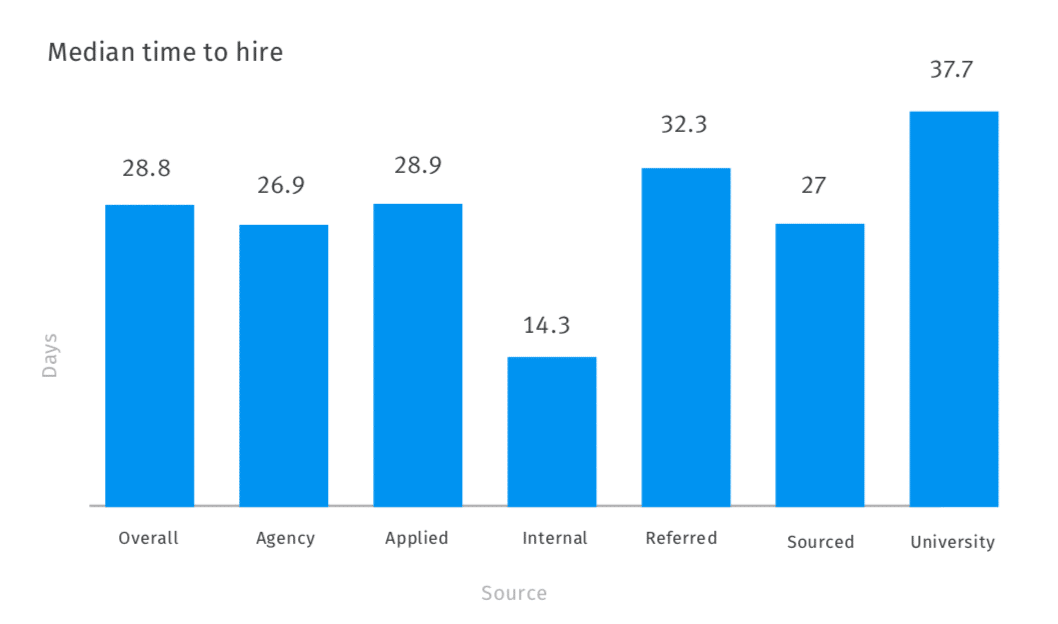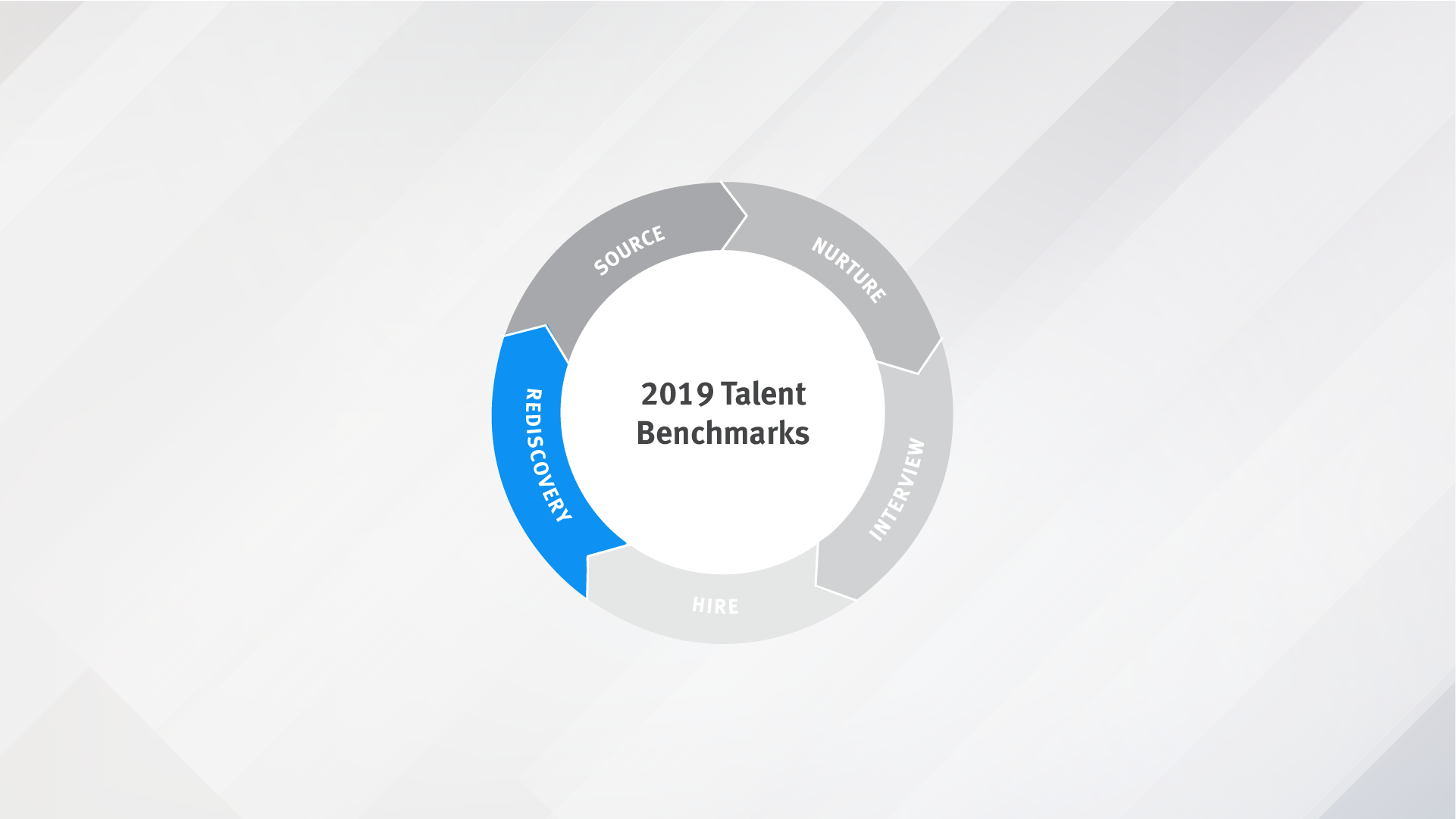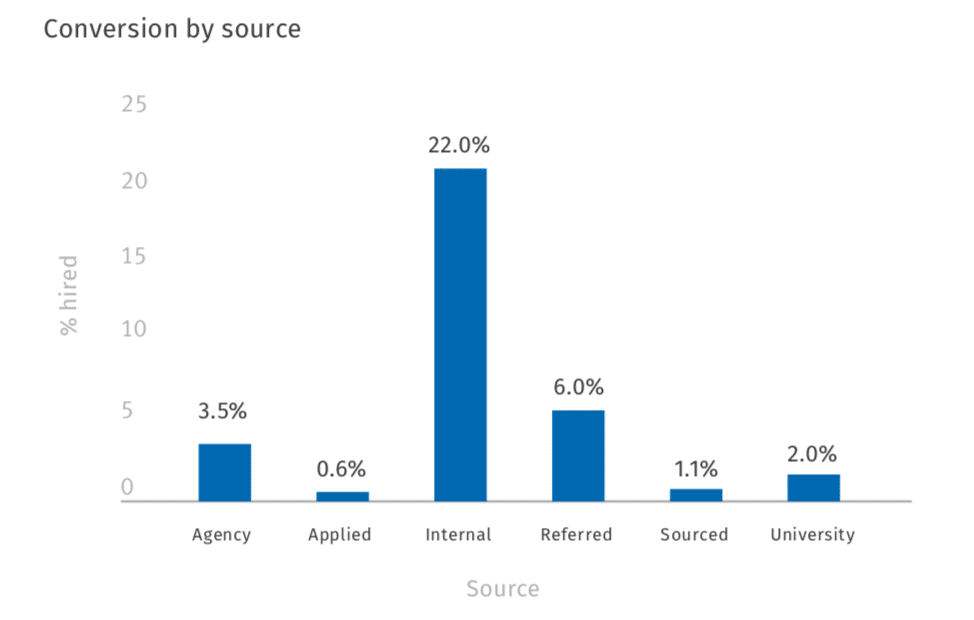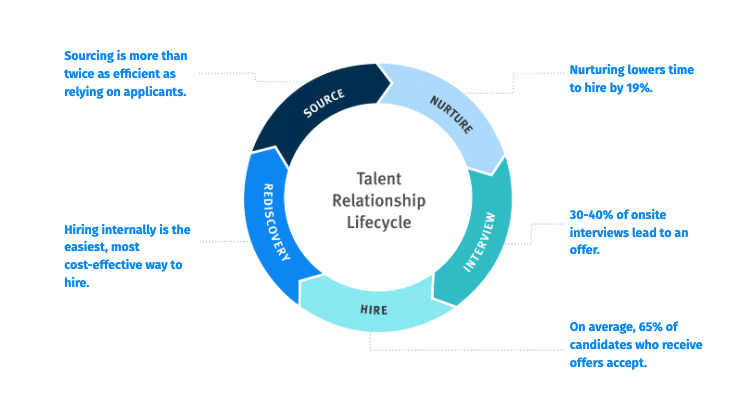The Talent Benchmarks blog series has now covered all the metrics up to hiring. But post-hire statistics are just as important as pre-hire statistics, and that’s exactly what we’ll be covering today.
At Lever, we call the post-hire stage “Rediscovery.” It’s what makes the Talent Relationship Lifecycle a lifecycle at all, instead of a traditional funnel. That’s because the hiring process doesn’t end when you make a hire.
If you need to fill that role again, you need to be able to rediscover the other candidates you were considering — the so-called “silver medalists.” You also need to consider internal candidates to support internal mobility. After all, your best candidate might already be working for you.
Our findings at Lever back this up. Hiring internally is the easiest, quickest, and most cost-effective way to hire. In our final entry in the Talent Benchmarks series, we explore the statistics of the Rediscovery stage.
The most efficient source of hires
In Part 1, we noted that sourced candidates are twice as efficient to hire for as applicants. Referrals and internal hires are drastically more efficient than both though.
Conventional wisdom often holds that referrals are the best source of hires, because they already have a connection to the company, and somebody internally can vouch for them. It’s true that referrals are a consistent source of great candidates, and it’s an extremely efficient way to hire. Every recruiting organization should have a referral strategy.
Hiring internally, however, is even better. We found that it’s over three times as efficient as hiring referrals. Internal candidates have a 22% hire rate compared to a 6% hire rate for referrals.
The takeaway here is clear: when hiring for a new role, look internally first, then ask for referrals, and only then start sourcing and looking at applicants.
Statistics Aren’t Everything
The numbers paint a clear picture when it comes to internal mobility. Not only is it more efficient, it’s also faster. On average, it takes only 14 days to make an internal hire, but it takes 27 days for sourced candidates and 29 for applicants. 
Here are some of the best practices for supporting internal mobility:
- Always consider existing employees before you even start your job search
- Provide a clear path for internal mobility
- Give internal candidates the white glove treatment they deserve
- Keep an archive of all your candidates — both internal and external
Final Thoughts
The statistics we found about internal mobility reinforce the larger narrative of the Talent Relationship Lifecycle: you need consistent engagement and genuine relationship-building with candidates before, during, and even after the formal recruiting process.
For many recruiting organizations that have traditionally focused on applicants and interviewing, this is a new approach. This 5-part blog series has shown why this a holistic, data-driven strategy is the most effective and efficient way to hire at every stage.
If you want an even deeper dive, be sure to download the full 2019 Talent Benchmarks Report, and to see how Lever can help you optimize your talent strategy, request a demo and one of our recruiting experts will be in touch.


